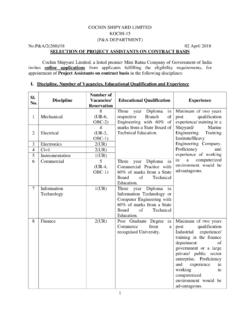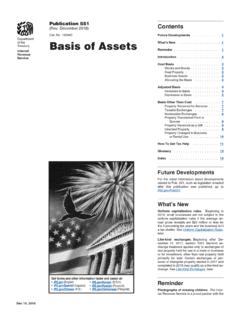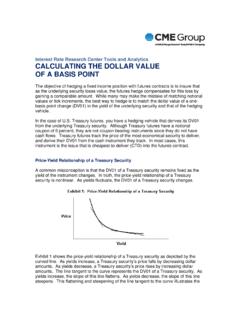Transcription of Basis: APrice-StableCryptocurrency ...
1 basis : A Price-Stable Cryptocurrencywith an Algorithmic Central BankFormerly known as: BasecoinNader Al-Naji Josh Lawrence Diao published: June 20, 2017 For the most updated version, : Why Does Price Stability Matter?1 Use Cases for a Price-Stable Cryptocurrency3 Developing Markets .. 3A Low-Volatility Cryptoasset for Traders .. 5 Credit and Debt Markets .. 6 The Broader Blockchain Economy .. 7 Fighting Macroeconomic Depressions .. 7 How basis Implements Price Stability8 The Quantity Theory of Money .. 9 The basis Protocol .. 10 Measuring the Exchange Rate .. 11 Expansion and Contraction via a Three-Token System . 13A Few Technical Notes .. 16 Robustness .. 16 Price Responsiveness .. 17A Post-USD World18 Stabilizing to a CPI .. 18A Regional basis for Each Regional Economy .. 19 Other Attempts at a Stable Coin20 Seigniorage Shares .. 20 MakerDAO .. 21 Tether .. 23 BitShares .. 23 Conclusion25 Contact25 AbstractThe price volatility of Bitcoin and other cryptocurrencies is one of the biggest barriersto widespread adoption that cryptocurrencies face today.
2 Unlike fiat currencies, today scryptocurrencies do not have a central bank that implements monetary policy tokeep purchasing power stable, meaning that changes in demand can induce massivefluctuations in price. If users cannot be sure that the purchasing power of theiraccounts will remain stable, they will never adopt a cryptocurrency as a mediumof exchange over a price-stable alternative. Moreover, without price stability, it isdifficult for credit and debt markets to form on top of a cryptocurrency because everycontract taking payments in the future must charge a large premium to factor in pricerisk. For example, imagine you received a salary of 1 BTC per month if the price ofBTC dropped, you might miss much cryptocurrency research has been dedicated to technical topics such astransaction throughput and smart contracts, almost no attention in comparison hasbeen paid to improving price stability, a problem we believe to be a much biggerobstacle to the mass adoption of cryptocurrencies as a medium of exchange.
3 In thispaper, we introduce basis , a cryptocurrency whose tokens can be robustly pegged toarbitrary assets or baskets of goods while remaining completely decentralized. Forexample, to start off, 1 basis can be pegged to always trade for 1 USD. In the future, basis could potentially even eclipse the dollar and be updated to peg to a consumerprice index (CPI) or basket of goods, similar to how central banks hit inflation targetstoday. The basis protocol accomplishes this by algorithmically adjusting the supplyof basis tokens in response to changes in, for example, the basis -USD exchange implements a monetary policy similar to that executed by central banks aroundthe world, except it operates as a decentralized, protocol-enforced algorithm, withoutthe need for direct human judgment. For this reason, basis can be understood asimplementing an algorithmic central : Why Does Price Stability Matter?Today, very few people use cryptocurrencies for normal, day-to-day transactions.
4 Butwhy?Some would say it s because cryptocurrencies are slow and expensive to use. Whilethat s true of Bitcoin and many older cryptocurrencies, it s certainly not true of somenewer protocols. For example, Dash claims it can confirm transactions in under asecond and handle thousands of transactions per second at fees of less than $ per1transaction, with fees expected to decrease further over time. Others would say it sbecause cryptocurrencies aren t reliable or trusted. But that s also not true, as thereare many protocols with firm backing from respected investors and strong developmentteams. Furthermore, Bitcoin itself has shown that the blockchain model is extremelyrobust from a fault-tolerance would say cryptocurrencies aren t widely used because there is an inherentchicken and egg problem: Because everyone uses local currency, merchants don t havean incentive to accept anything else. But we actually think the opposite is true. Aslong as some customers want to pay in cryptocurrency, it costs merchants almostno overhead to accept it, and it costs them sales if they don t.
5 In fact, becausecryptocurrencies are immune to fraudulent chargebacks, and transaction fees can bemuch lower than fees for credit and even debit cards, merchants should actually prefercryptocurrency can find two clues to the real problem by examining the perspectives of themerchant and the customer in turn. First, consider the merchants that do acceptcryptocurrency payments today. Microsoft, Quickbooks, and Spotify, for example,allow customers to pay in Bitcoin using a service called BitPay. However, none ofthese merchants keep their money in Bitcoin instead, they immediately convert anyBitcoin they receive into USD. Why? Well, these merchants are not in the businessof speculating on Bitcoin. They don t want exposure to Bitcoin market risk anymore than they want to hold their money in barrels of oil. What if Bitcoin dropped90% one day? If you ask people who love cryptocurrencies, they might mentionmany of the attributes they love for example, the convenience, the control, and thesemi-anonymity.
6 But we bet they still can t stomach the idea of keeping their lifesavings or quarterly revenue invested in such a volatile asset. In other words, in orderfor cryptocurrencies to become more than just a playground for speculation, there isa severe need for them to be a stable store of , imagine trying to make a purchase using Bitcoin. Because merchants wantto collect a fixed amount of USD for their services, you re faced with a constantlyadjusting BTC price for your potential purchase. This is a terrible user worse, imagine receiving a job offer that pays 1 BTC per month. If the priceof BTC happened to drop one month, you can t pay your bills. Alternatively, if youborrowed money via a loan that demands a monthly payment of 1 BTC, a price swingin the other direction could leave you in default. We ll discuss this more later, butthe fundamental problem is that today s price-volatile cryptocurrencies subject anycontract promising or taking future payments to extreme price risk.
7 From this, wecan see that in order for cryptocurrencies to become a viable medium of exchange orunit of account, there is again a severe need for price currency has three fundamental functions: A store of value, a medium of exchange,and a unit of account. We believe that price stability is a gatekeeper to the mainstreamadoption of a currency for any of these purposes. In this whitepaper, we introduce basis ,the first cryptocurrency to implement robust, decentralized, and protocol-enforcedprice stability. Specifically, we discuss the following topics: Use Cases for a Price-Stable Cryptocurrency: A number of valuable use cases inwhich a price-stable cryptocurrency would be preferred over the best alternativetoday. How basis Implements Price Stability: A specification of a fully-decentralized,price-stable cryptocurrency protocol, and why it is robust. A Post-USD World: How a world economy denominated in basis looks. Other Attempts at a Stable Coin: Why other attempts at developing a stablecoin are insufficiently Cases for a Price-Stable CryptocurrencyDeveloping MarketsPeople living in developed economies take for granted their access to stable you re in the US with unfettered access to dollars, or in the EU with access toeuros, you may wonder why the world needs a price-stable cryptocurrency.
8 However,in countries with weak institutions and unstable currencies, high rates of inflationand currency devaluation are common. In these markets, we expect a price-stablecryptocurrency will be in high of publication in Q3 2017, Egypt is suffering 32% annual inflation, Argentina23%, and Nigeria 16%. And this is just a sampling of countries whose governmentsare relatively more stable let s not forget Venezuela, whose annual inflation rate iscurrently at 741%. What would you do if your savings were disappearing at a rateof 741% a year? Faced with a rapidly devaluing local currency, people look for otherways to survive, frequently flocking to the USD. This effect is known as , it takes three forms: First, a population might choose to adopt the dollar over local currency withoutany coordination from the local government. The USD is used as the de factocurrency in a number of Central Asian and sub-Saharan African countries, andthe rate of adoption can be overwhelmingly fast despite the lack of officialcoordination.
9 For example, in the 2 years from 2006 to 2008, dollarization in3the Seychelles jumped from 20% to 60%. Second, a country s citizens might demand the dollar in spite of governmentcapital controls that prevent the transfer of USD across its borders. Argentina sblack market for dollars, thedolar blue, was an open secret during its reignof capital controls from 2011 to 2015. During these years, $10 million to $40million per day changed hands under the table at rates that were 25-30% abovethe official exchange rate. These rates were even published daily in nationalnewspapers, despite it being officially illegal. Third, currency devaluation could grow so extreme that governments mightofficially switch to the USD, as happened in Zimbabwe in 2009. Today, theentire country requires routine shipments of physical paper dollars and t there an opportunity here? Whether or not dollarization is officially endorsed,citizens, banks, and governments incur significant costs in importing physical solution, by which millions of dollars could be transportedon one s phone, seems like a vastly superior alternative to paper dollars inall dollarization a final aside: Existing cryptocurrencies have found some traction off in somehyperinflating economies for example, Bitcoin usage has been growing in Venezuelaas it has faced its currency crisis.
10 However, Bitcoin can never truly free people fromtheir unstable local currencies due to its own lack of price stability. For example, ifBitcoin is going through a cycle of devaluation, users perceive no difference between itand a devaluing local currency. Even if Bitcoin crashes just once, people will wantto move to a price-stable alternative should one exist. A stable coin would thus bethe killer app for developing economies experiencing rapid currency devaluation. Inthe extreme case, instead of switching to importing paper dollars and coins, the nextcountry to switch away from its local currency like Zimbabwe did could instead adopta price-stable these lines, in a 2017 speech, the Managing Director of the InternationalMonetary Fund, Christine LaGarde, proposed:[T]hink of countries with weak institutions and unstable national curren-cies. Instead of adopting the currency of another country such as dollar some of these economies might see a growing use of virtualcurrencies.








